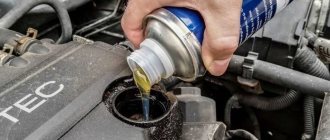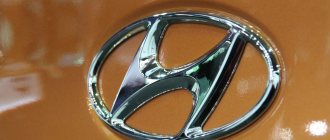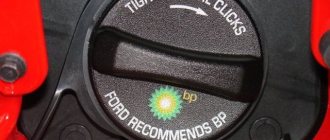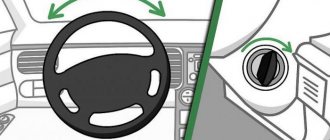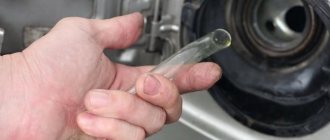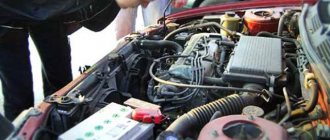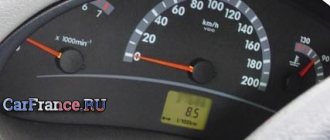Surely, every owner of a car with a gasoline engine, due to various circumstances, had to mix 92 and 95 gasoline at least once. Some people do this out of economy, others believe that in this way it will be possible to achieve ideal fuel quality, while others simply conduct experiments, pouring one or another fuel into the tank. But in order to understand whether it is possible to mix AI-92 and AI-95, it is worth delving into the process of creating various gasolines, and only then drawing conclusions about the possible consequences.
The process of obtaining gasoline from oil
Various types of gasoline are obtained by distilling oil. There are several types of petroleum processing. Distilling oil into gasoline is a series of chemical temperature processes.
Direct distillation of raw materials produces straight-run gasoline. To improve the quality of the resulting gasoline, it is recycled.
The following recycling methods are used:
- catalytic reforming;
- hydrocracking;
- catalytic cracking;
- thermal cracking and some others.
Using direct distillation - rectification - gasoline was produced at the dawn of the automobile industry. Using this method, crude oil is heated, and as its temperature rises, the crude oil is separated into different fractions that differ in boiling point.
Rectification can be carried out both at atmospheric pressure and in vacuum of different depths. The resulting gasoline has low octane levels, not higher than 60 units.
To obtain higher quality fuel suitable for use in modern carburetor and injection internal combustion engines, other methods are used. The most common among them are catalytic and thermal cracking.
The basis of the cracking process is the decomposition of oil components into fractions by heating to high temperatures using catalysts. During the cracking process, complex hydrocarbon compounds are decomposed into simple ones, which have a lower molecular weight.
The advantages of cracking are:
- increased productivity of the process, gasoline yield increases by 40-50%;
- improving the quality of the resulting fuel - detonation resistance can range from 70 to 90 units;
- To obtain a commercial petroleum product from gasoline obtained by cracking, a smaller amount of additives is required.
When producing fuel, additional technologies can be used in production lines to improve the quality of the final product and increase the depth of processing of petroleum feedstock.
What is octane number?
The main characteristic of fuel for gasoline internal combustion engines is the octane number. This value indicates the degree of resistance of the fuel intended for a carburetor engine to spontaneous detonation.
The most common gasolines are compositions with knock resistance equal to 92, 95 and 98 units.
To improve the quality of fuel and increase its resistance to spontaneous detonation, various additives are used.
Such complexes include:
- alkyls;
- esters;
- alcohols;
- additives that increase the resistance of fuel to freezing.
When determining the detonation resistance of fuels, isooctane and n-heptane are used as standards. The detonation resistance of the first compound is taken to be 100 units, and for the second substance it is 0 units. N-heptane is capable of self-detonation under natural conditions.
A mixture of these compounds in different percentages represents the value of resistance to detonation, expressed in units.
To determine the value of detonation resistance, the research and motor method is used.
Gasoline class
The current GOST establishes the following grades of fuel for gasoline internal combustion engines:
- AI-80.
- AI-92.
- AI-95.
- AI-98.
For each brand of fuel there are 4 environmental classes:
- K2 (up to 500 mg of sulfur per 1 kg, and the share of monomethylamine is not more than 1.3%);
- K3 (up to 150 mg/kg and 1% MMA);
- K4 (up to 50 mg/kg and 1% MMA);
- K5 (up to 10 mg/kg and complete absence of MMA).
The value of detonation resistance is not related to the class of environmental cleanliness.
In addition to the indicated environmental safety rating, fuel for gasoline internal combustion engines is divided into classes depending on volatility.
In accordance with GOST, gasoline is divided into the following classes:
- A, B - summer;
- C, D, E, F - winter;
- C1, D1, E1, F1 - off-season.
In total, there are 10 classes of fuel depending on volatility.
Types of additives
A fuel additive is a drug added to fuel to improve its performance.
There are 4 types of gasoline additives:
- dehumidifiers;
- cleaners;
- octane correctors;
- A separate type of additives with combined properties has been developed.
Water neutralizers, or dryers, are designed to remove small amounts of moisture from fuel, which can freeze in winter.
Injector cleaners ensure cleaning of injectors and power unit valves from deposits and carbon deposits without disassembling the engine. This additive works well with low mileage.
Octane correctors provide an increase in the octane number in the fuel, which helps reduce fuel consumption and increase vehicle power.
Such additives may consist of:
- monohydric alcohols;
- esters;
- allotropes of carbon.
One of the most common additives is FuelEXx Gasoline. This mixture, when added to the fuel, allows the combustion chamber to be cleaned of accumulated soot and varnish deposits, which improves the functioning of the power unit.
Another additive used by car owners is CeraTec, manufactured by Liqui Moly. The basis of the product is liquid ceramics. The use of the composition increases engine power, reduces fuel consumption and improves the operating mode of the power unit.
Various gas stations and manufacturers
I won’t write now that all major brands buy fuel from several refineries , but this is not entirely true.
The most important thing to understand is that all gasoline is now standardized - not only according to GOST, but also according to the characteristics and standards of “EURO” (EURO5 is now used in Russia).
I admit that different manufacturers may change the formula slightly, but the overall composition should be within certain limits. It’s like milk in stores has 2.5% fat, there are a lot of manufacturers, but the final composition is the same.
SO if you refuel at different gas stations with one type of fuel or at one 92 and at another 95 gasoline. Nothing bad will happen.
Now we are watching a small and useful video
Well, friends, as you understand, mixing will not lead to anything terrible! However, you need to understand that if your engine is designed for 95 or 98, you should not pour 92, thereby saving a little, which will ultimately work out sideways.
I’ll end here, sincerely yours, AUTOBLOGGER.
( 13 votes, average: 4.00 out of 5)
Similar news
Fuel consumption at idle speed. How much per hour is considered normal?
What is antigel and how does it work. Necessary information, read
HBO 5th generation is different from 4th generation. I asked a question at the station.
Add a comment Cancel reply
Comments
Good day everyone, I decided to write my review of the 2010 Toyota Avensis. Just want…
TOP articles for the month
I have many different articles and videos on various gearboxes, for example here...
I already have an article on the website about choosing memory cards (you can see it here), it’s very...
In the article - is it possible to open windows when the air conditioner is running (you can read it here), I was asked...
1 Gasoline 92 or 95 or 98
Many car enthusiasts ask themselves and others the question, which gasoline is better, what will happen if you fill your car with 95 or 98 gasoline if, according to its passport, it needs 92 gasoline.
I will answer this important question.
First, I will explain the difference between different brands of gasoline, the number of the gasoline brand means its octane number, in simple terms, the higher the octane number in the gasoline brand, the more detonation-resistant it is. In even simpler terms, detonation is when gasoline ignites itself due to its compression ratio.
Risks and consequences when mixing gasoline
When refueling a car with 95 fuel, if there is already 92 gasoline, you should remember that the fuel in the tank will practically not mix. This occurs due to the fact that different fuels have different densities.
If you fill the tank with fuel with an octane number of 95 and 92, they will separate and the 95 fuel, being lighter, will collect on the surface of the 92. When the engine is running, first one type of fuel will be produced, and then a second, the benefit will be in improving the quality of the fuel mixture in in this case is doubtful. But if the car’s engine is designed for operation using AI-92, filling the tank with AI-95 will not cause the power unit to fail.
Advice from manufacturers
According to the manufacturers’ instructions, each individual car is “tailored” to a specific type of fuel. That is, if it is indicated on the gas tank cap that you should fill it with 92 gasoline and above, then you must follow this recommendation. In this case, nothing special will happen, and high-octane fuel will not damage the engine. However, most of today's cars “prefer” 95 gasoline, and here the owner’s desire to save money, pouring AI-92, can play a cruel joke on him. High-octane fuel requires a lower combustion temperature. That is, the desire to save money can lead to premature engine wear and vehicle breakdown. The result is very dubious savings, which are unlikely to justify all the risks. A car owner should always remember the consequences and operate the car wisely, carefully weighing all the pros and cons.
What happens if you pour 92 gasoline into an engine designed to use 95?
If the power unit is designed for operation only on AI-95, then filling it with low-octane fuel can have a significant impact on the operation of the internal combustion engine.
A higher octane number implies a lower combustion temperature of the fuel mixture. Changing this parameter when using low-octane fuel affects the technical characteristics of the engine.
When the engine runs on such gasoline, the combustion temperature of the mixture can increase to a level not provided for by the design, which provokes accelerated wear, burnout, or melting of the structural elements of the cylinder-piston group.
The use of low-octane fuel in an engine designed to use 95 octane fuel leads not only to accelerated wear, but also to increased fuel consumption.
Differences
But first, let's talk in a nutshell about the differences between these two most popular brands offered at gas stations. After all, many drivers, especially beginners, think that the 95 is of higher quality compared to the 92 and cannot harm the engine. But the opposite is true.
Higher gasolines are produced on the basis of 92nd
, by adding to it all sorts of additives that can increase the octane number. Therefore, 92 is cleaner than its counterparts, it turns out (although, according to experts, in the Russian expanses, especially in the outback, it is difficult to find fuel that is not created with the help of additives, even 92). But the same experts claim that due to the low octane, 92 and there are few additives, and it itself is cleaner.
By the way, adding these chemicals and bringing raw materials to rank 95 costs gas stations less than purchasing the same material from oil refineries. That's why so many people are doing body blows. Such a homemade 95 can be extremely dangerous for the engine, since the buyer does not know for certain what has been added to it!
A few words about American and turbocharged engines
I was also bombarded with the following questions: “I bought a car imported from the USA, it says that you need to use AKI 91 gasoline. What is this, and what kind of fuel should I choose?”
The US market has slightly different standards; their classification is not like ours (that is, “research”). The abbreviation AKI means a conditional, average designation of two indices ((“research” + “motor”)/2).
If we bring it closer to our standards, we get something like this:
AKI87 = AI92
AKI89-91 = AI95
AKI93 = AI98
I would also like to note the turbocharged options; in the last article I said that it is recommended to use at least “95” in them.
Let's think logically, why 95 and 98? Turbocharged engines use much larger volumes of air and fuel, the mixture in them must be richer, and from the points above we understood what ENRICHED fuel is, it gives us more octane. Think for yourself - WHY BUY A TURBO, AND FURTHER FEED IT WITH LEAN MICHES, it’s just not designed for that! The amount of air must strictly correspond to the caloric content of the fuel.
It is also worth noting that when using the “92”, as many manufacturers indicate, the “required temperature regime” may be violated, which may lead to the failure of some components, in particular the “turbine” itself.
Therefore, in TURBO, only “what the doctor ordered”, otherwise it is fraught with repairs
Didn't find the information you are looking for? on our forum.
We recommend reading:
Motor oil 5w40 Mitasu
Acetone in a tank with gasoline for flushing, will there be any results?
Flushing diesel engine oil
Engine oil ZIK 5w30 x5. Characteristics
Which sealant is better for the valve cover of VAZ 2112 16 valves
Motor oil total quartz 9000 0w30 reviews, specifications
Expiration date of gasoline, how long can fuel be stored?
Engine oil 5w30 havoline


